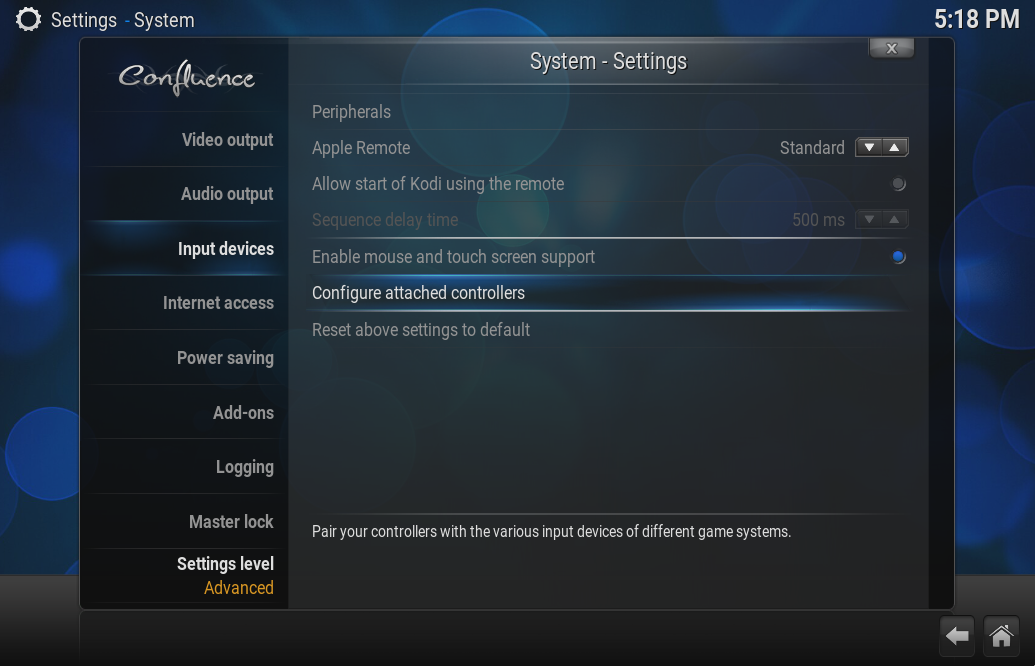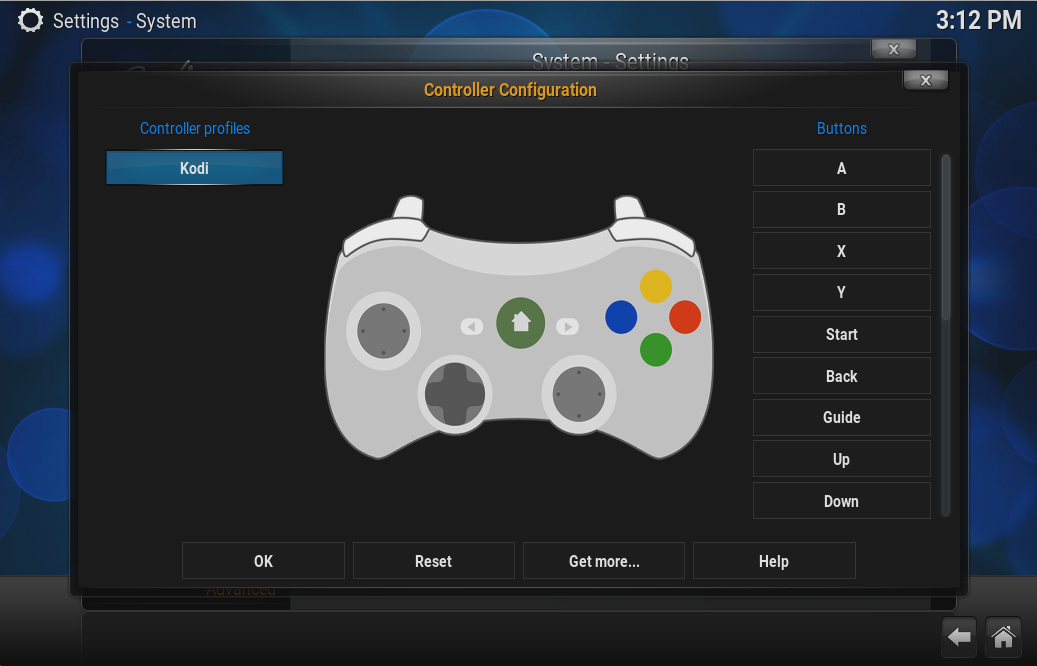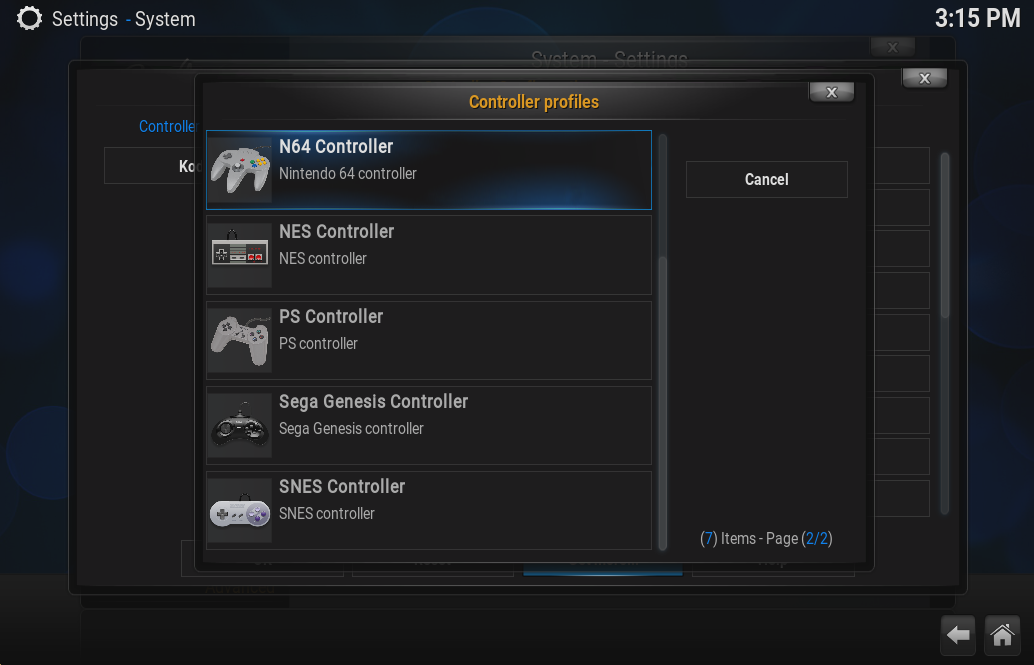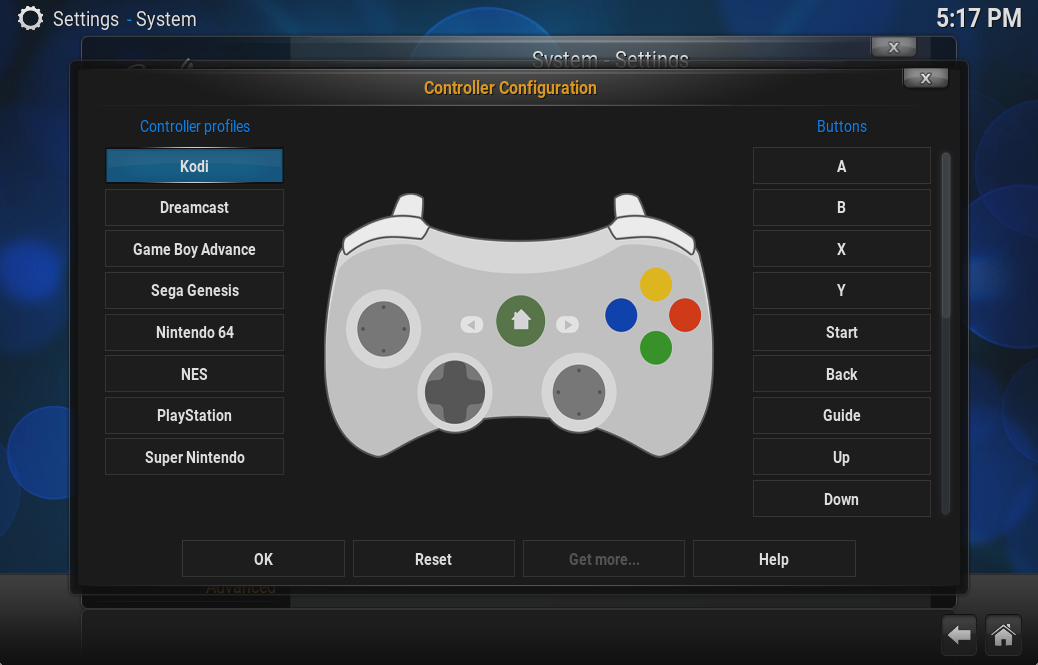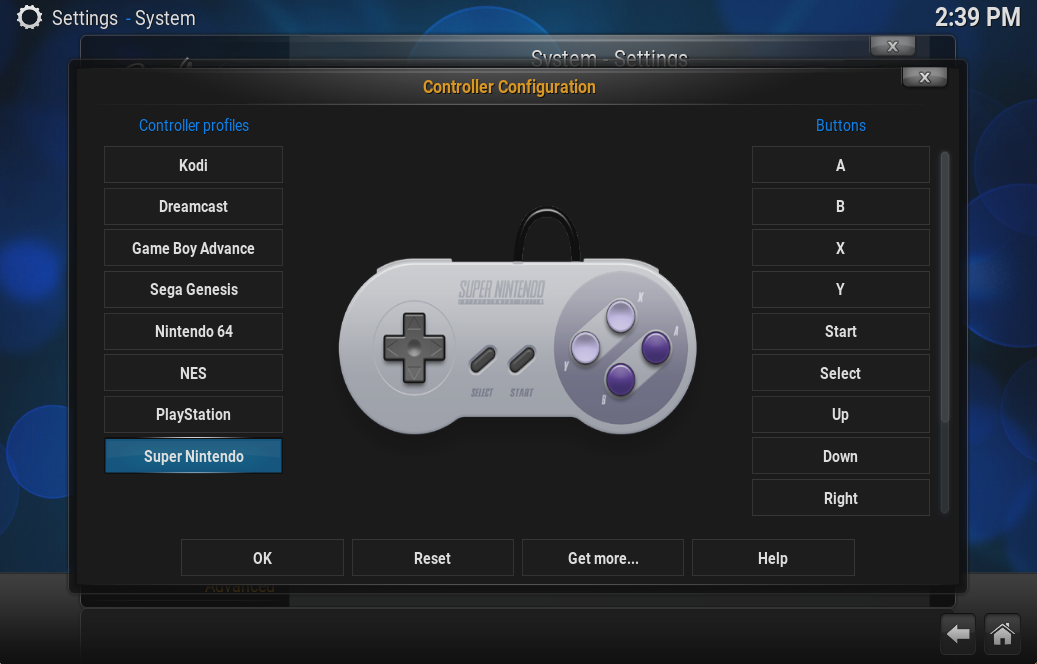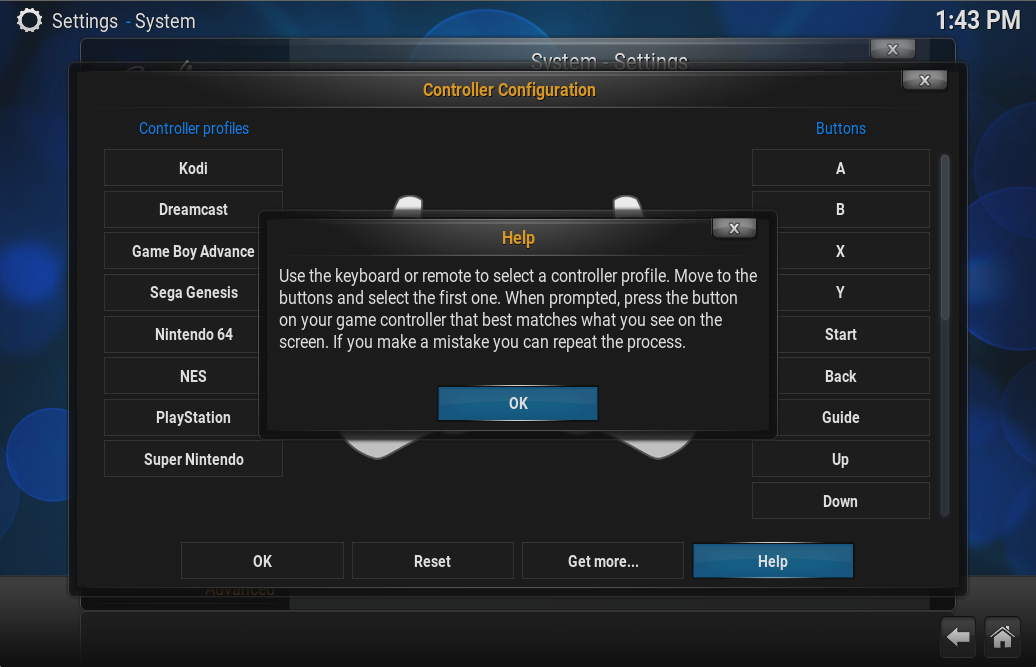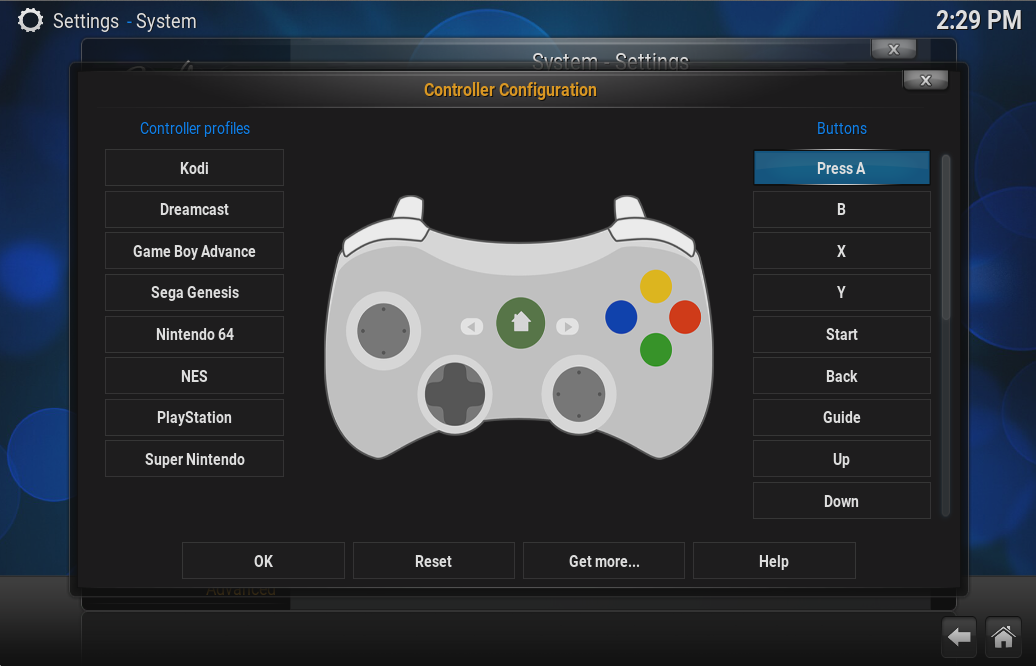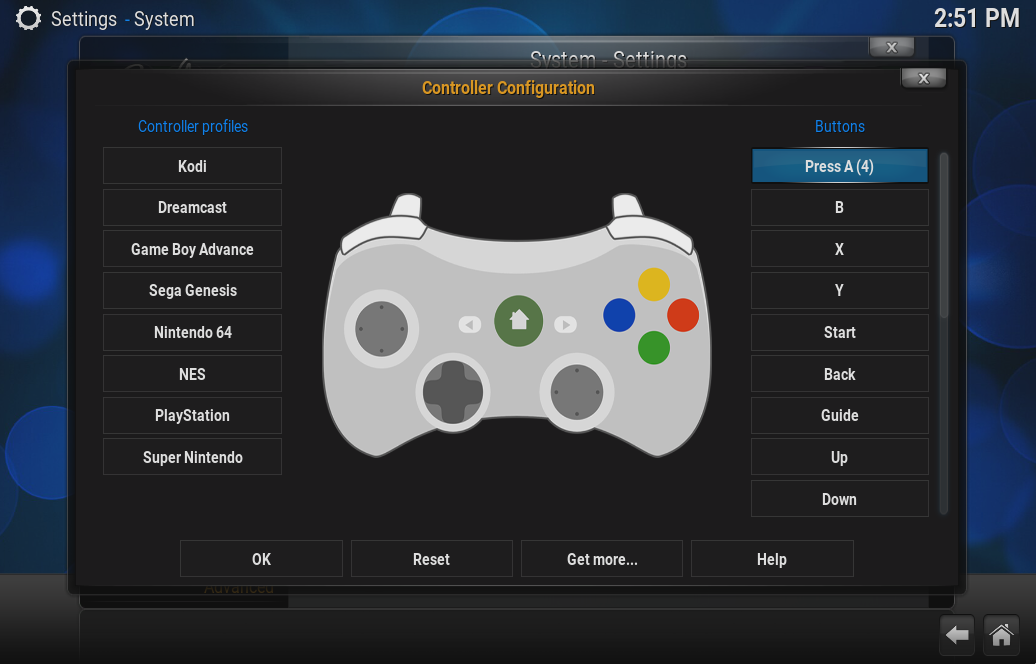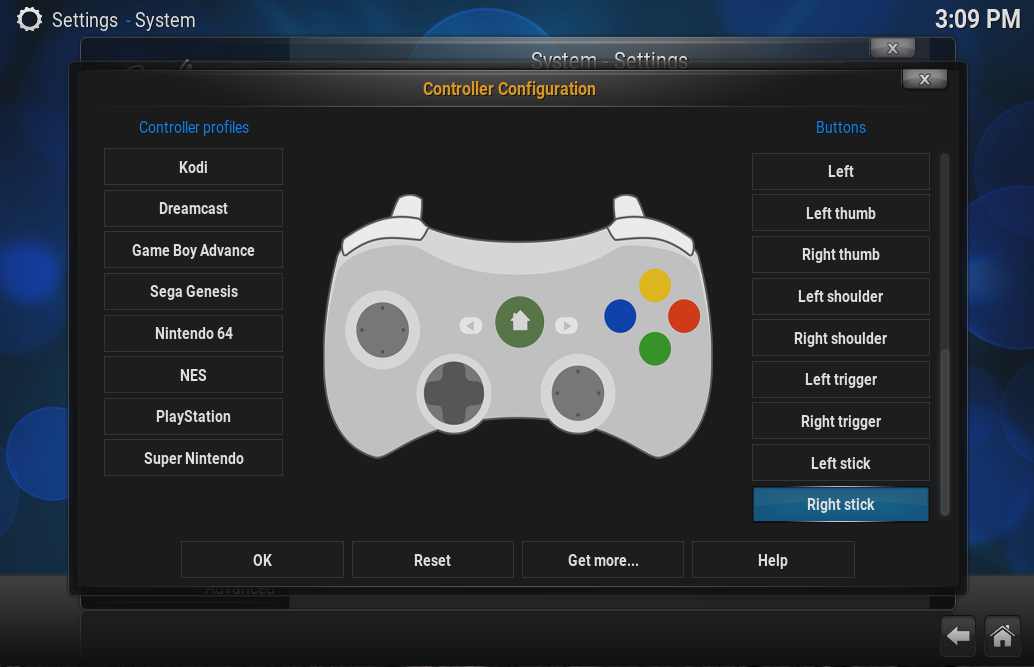HOW-TO:Configure controllers: Difference between revisions
m (Ned Scott moved page Controllers to HOW-TO:Configure controllers without leaving a redirect) |
No edit summary |
||
| Line 1: | Line 1: | ||
Kodi Krypton features improved controller support. The old system required cumbersome log scanning and xml editing. Now, everything can be done from the GUI. | Kodi v17 Krypton features improved controller support. The old system required cumbersome log scanning and xml editing. Now, everything can be done from the GUI. | ||
Kodi is joining a large effort to automatically configure controllers for emulators (because let's face it, input configuration is [i]by far[/i] the worst experience of any emulator setup). Automatic configuration means you can plug in an N64 controller and have it work in a SNES game, automatically and without any input. | Kodi is joining a large effort to automatically configure controllers for emulators (because let's face it, input configuration is [i]by far[/i] the worst experience of any emulator setup). Automatic configuration means you can plug in an N64 controller and have it work in a SNES game, automatically and without any input. | ||
Revision as of 07:03, 12 March 2016
Kodi v17 Krypton features improved controller support. The old system required cumbersome log scanning and xml editing. Now, everything can be done from the GUI.
Kodi is joining a large effort to automatically configure controllers for emulators (because let's face it, input configuration is [i]by far[/i] the worst experience of any emulator setup). Automatic configuration means you can plug in an N64 controller and have it work in a SNES game, automatically and without any input.
If you'd like to help, you can share your button maps with the Kodi community. As we gather data from many users, this "votes" for your configuration, allowing it to potentially become the default for all Kodi users.
Setting up controllers
First, find the controller window in System settings. It's well hidden.
When you first launch the configuration utility, you will see something that looks like this:
(optional) The most interesting thing you can do here is to select "Get more...". This lets you install profiles of controllers for several game platforms.
When you've pimped out your install with every controller, it will look like this:
On the left is a list of controllers for several different platforms ("Kodi" will allow you to control Kodi).
On the right is a list of buttons belonging to each controller. When you select a different controller, the list updates to show its buttons.
The picture in the center gives a better idea of which buttons are which.
If the mapping process is not immediately evident, there is a help button in the bottom right.
When you select a button, an instruction appears.
{{larger| If your controller looks the same as the one on the screen, you should push the button on your controller that matches the button you see.
If your controller is radically different, you have two options.
- You can press the button that matches the physical location
- You can press the button that matches the game logic
For example, a physical match would be the 360 controller's A and the SNES's B.
On the other hand, a logical match would be the 360 controller's A and the SNES's A.
If no button is pushed after a few seconds, the instruction will start counting down.
When the countdown reaches zero, the prompt is aborted.
The prompt can also be aborted by pressing any key on the keyboard or remote that causes the button to lose focus.
When the wizard reaches the end of the list, the instructions are over and your controller is mapped.
Good job!
